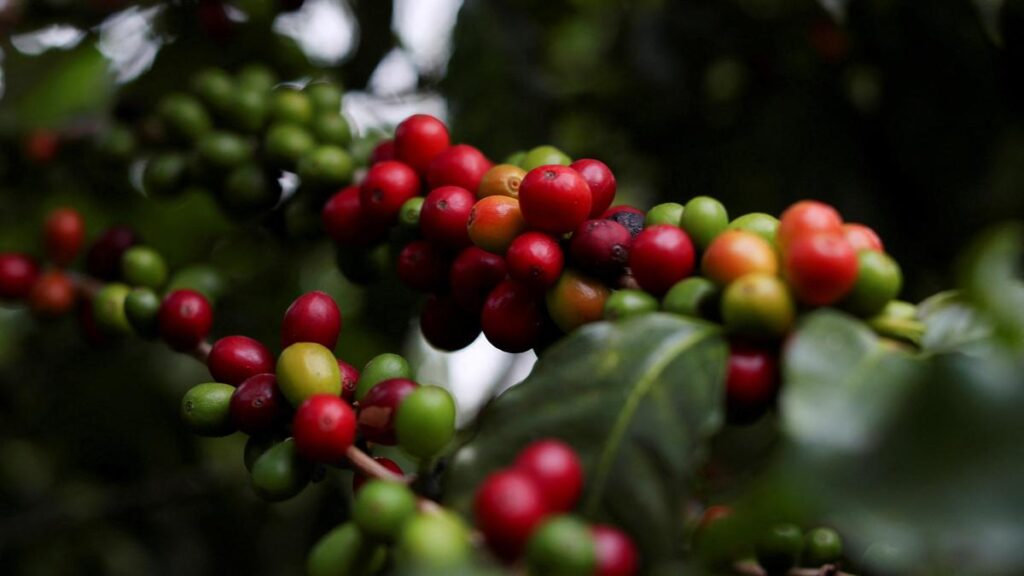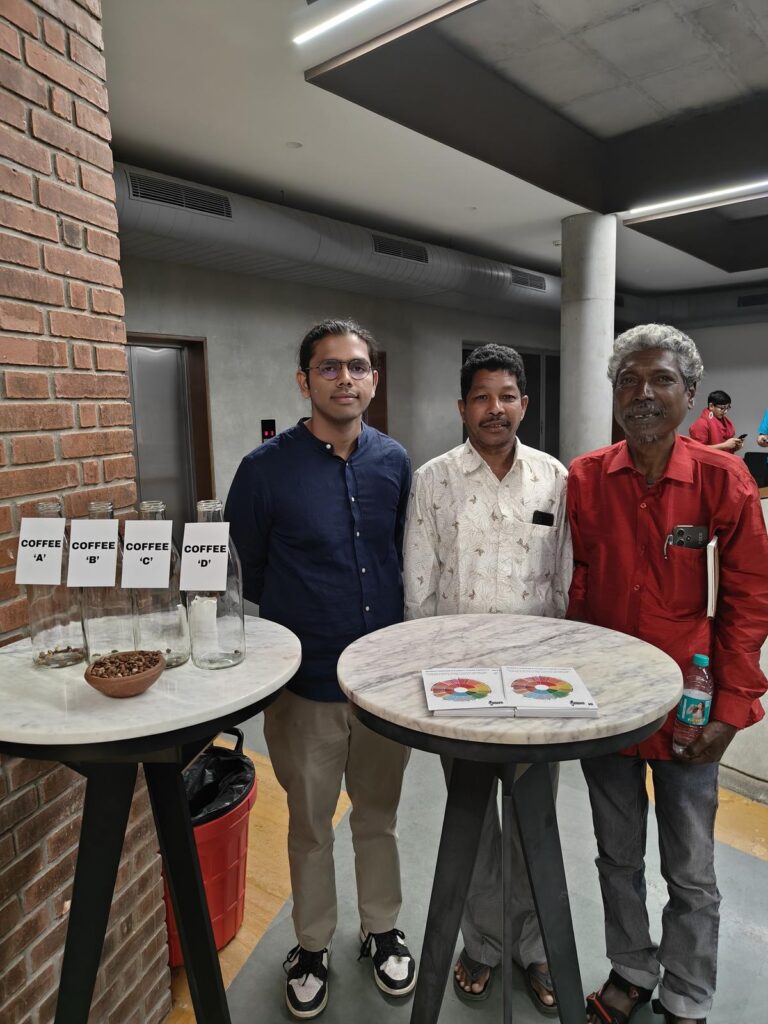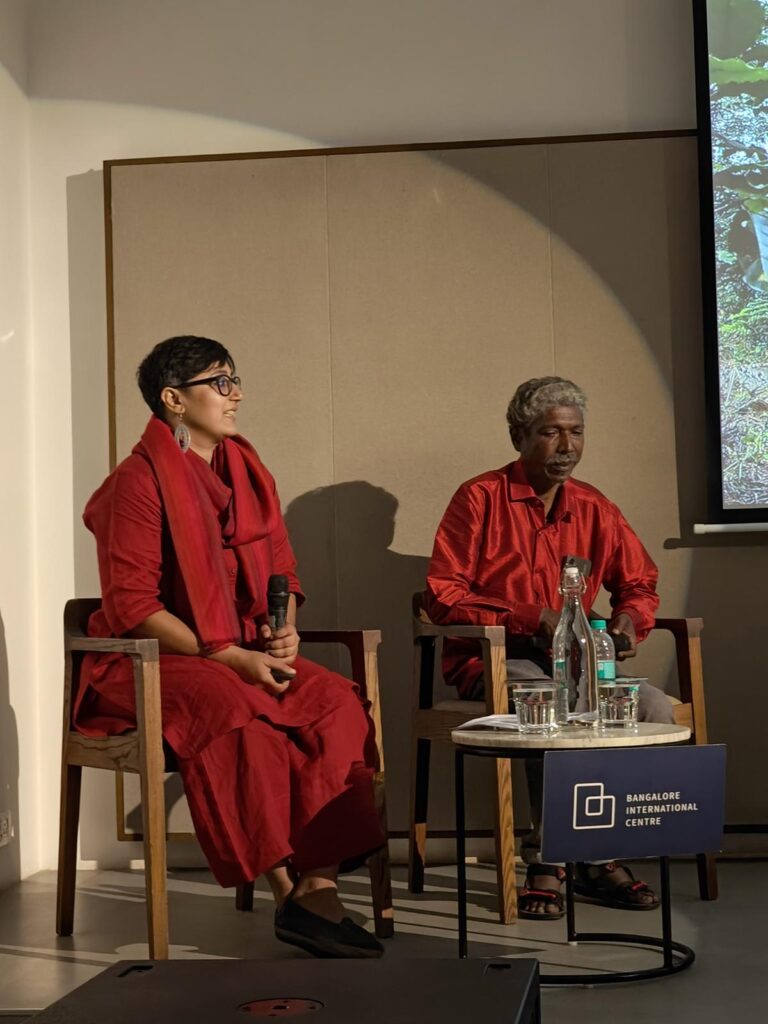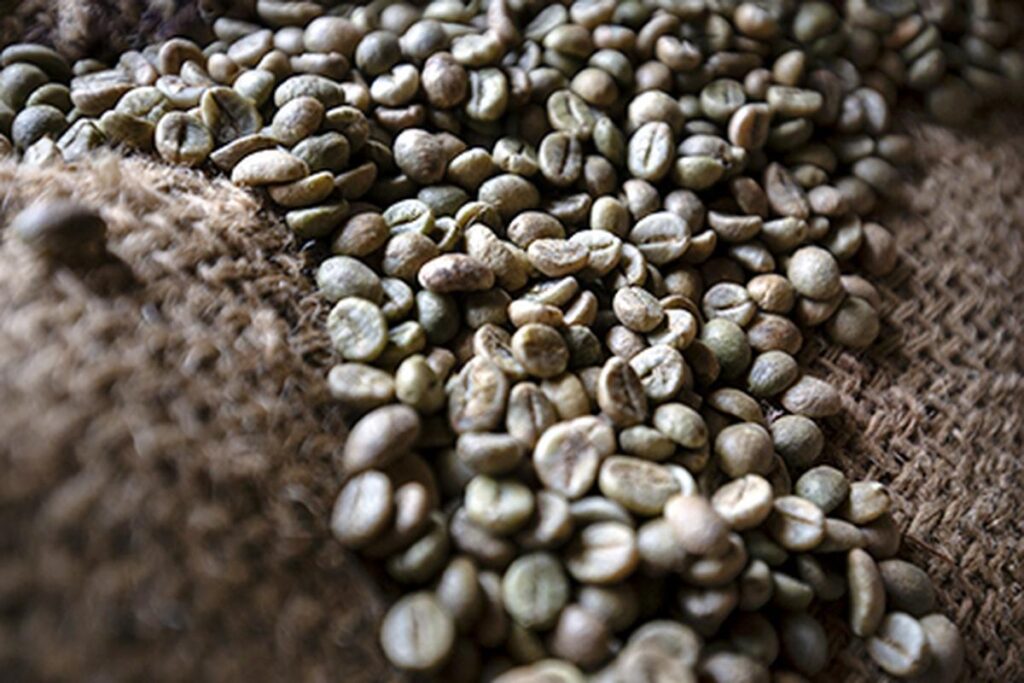The journey of coffee in India and the Soliga community’s role in conservation.

“The first record of coffee in India is around 1799, when the British set up an experimental plot in Thalassery, Kerala. From then on, coffee planting came to the Nilgiris, Coorg (now Kodagu) and other parts,” says Arshiya Bose. | Photo Credit: AMANDA PEROBELLI
What will your cup of coffee taste like by 2050? Worse, will you even get your cup of coffee? Alarmist as this question might sound, these questions are being asked for the last 10 days. A study published on PLOS One, a peer-reviewed open-access journal published by the Public Library of Science in January 2022 (Expected global suitability of coffee, cashew and avocado due to climate change), predicts an overall decline in the world’s suitable growing land for arabica coffee by 2050.
Amidst the worry of what the future holds for coffee, a recent panel discussion at Bangalore International Centre (BIC) explored the ecological history of coffee in India, the impacts of coffee production on biodiversity, producer observations of everyday climate change on their farms and how the Soliga, an indigenous community, grows coffee on the Biligiri Ranganatha Tiger Reserve Hills (B.R. Hills) in Karnataka.

M. Kethe Gowda and M. Sannarange Gowda. | Photo Credit: SPECIAL ARRANGEMENT
In B.R. Hills area
M. Sannarange Gowda from the Soliga community, who grows coffee on his biodiverse farm in B.R. Hills, leads various capacity-building programmes for regenerative agriculture. The co-founder of a community-led YouTube channel, Kaadina Makkalu, says that the community started growing coffee initially as it was not something that animals preferred eating. M. Kethe Gowda, co-founder of the channel who has over two decades of experience in ecological research on bees and honey, native tree species, and birds, advocates for holistic farming practices that conserve local ecosystems and biodiversity. He leads experimental work on non-chemical approaches to managing pest and disease outbreaks and is passionate about community outreach.
Sannarange Gowda says, “We grew crops like ragi, maize and so on, which would frequently be destroyed or eaten by animals like deer, elephant, wild boar, monkey and birds in the forest and the hill area… Over a period of time, the Horticulture Department started encouraging people in podus (settlements) to grow coffee, because wild animals would pass through the farms and not feed on them. We needed registered land to grow coffee and could not just grow it anywhere. We finally got a piece of land, and since then, we started growing coffee.”
Kethe Gowda goes back to a time when his ancestors lived in the forest, and there were various podus inside the forest. “There we grew crops like ragi, maize, hyacinth beans, dal, pumpkin, mustard and more. The Forest Department at one point wanted all of us inside the forest to live outside the forest, because when tiger reserves were established, that was the rule. We were told we would be given land close to the B.R. Hills area, but we had to come out of the forest.“ Kethe Gowda says that it did not feel right for them to move out of the land they have always called home for centuries.
“We told the forest officials that our crops were ripe, and we could not leave until they were harvested, but they brought in tamed elephants to destroy our crops and asked us to leave. So, this is how we came out of the actual forest and lived in the B.R. Hills area,“ he explains.

Arshiya Bose and M. Sannarange Gowda. | Photo Credit: SPECIAL ARRANGEMENT
A colonial project
Arshiya Bose, who holds a PhD in Geography from the University of Cambridge, U.K., and a Post-Doctoral Fellowship from ETH-Zurich, says that according to legend it was a Sufi saint, Baba Budan, was brought coffee seeds to India. But coffee as we know it today, grown in commercial plantations, was a colonial project.
British planters who came over from Sri Lanka started growing coffee. “The first record of coffee in India is around 1799, when the British set up an experimental plot in Thalassery, Kerala. From then on, coffee planting came to the Nilgiris, Coorg (now Kodagu) and other parts,” says Arshiya, who is the founder of Black Baza Coffee which she started in 2016. It is a social and conservation enterprise that partners with smallholder coffee producers in India’s Western Ghats biodiversity hotspot. Coffee’s journey to India
“What is fascinating about the way the colonial coffee project went forward is that many of the British planters who were here were actually Naturalists back home in England. So, they kept a very detailed record of not only how they grew coffee, but also what kind of wildlife they saw. There was a prolific writer and journal keeper, Edwin Lester Arnold, who found himself in Coorg around the mid 1800s. In one of his books he describes what kind of wildlife was there. He writes how coffee growers borrowed their coffee planting method from how they cultivated wheat back in England and Europe,” she explains.
Much has changed since that time and Indian now produces a lot of coffee, being the eight largest coffee producing country in the world as of 2022.

Unlike the British coffee plantations, the Soligas continued growing coffee amid the forest. | Photo Credit: Abhishek Chinnappa
Impact on biodiversity
Arshiya explains that unfortunately, in the process of large-scale cultivation and development of plantations, there has been a huge impact on the kind of biodiversity that existed.
“If you take the map of rainforests in the world or coffee plantations in the world, these maps often overlap almost identically,” she says, adding that there is huge loss of forest cover in India to coffee plantations in districts like Kodagu. Arshia argues that for long-term resilience, coffee should be grown amid trees. “It regulates the kind of humidity, soil moisture coffee needs, and provides the buffer against any kind of extreme events that may happen around you,“ she adds.
Unlike the British coffee plantations, the Soligas continued growing coffee amid the forest. “We continued to grow coffee under the forest canopies, which is very beneficial. There were jamun, ficus and other threes, because of which wildlife like sloth bear, white-cheek barbet, deer etc. came to feed on the fruit, excrete in the same spot, which would in turn into manure for the coffee plants. I am proud of the wildlife that comes to our farm, which shows how healthy our farm is,” Sannarange Gowda explains with pride.
source: http://www.thehindu.com / The Hindu / Home> News> Cities> Bengaluru / November 29th, 2024

